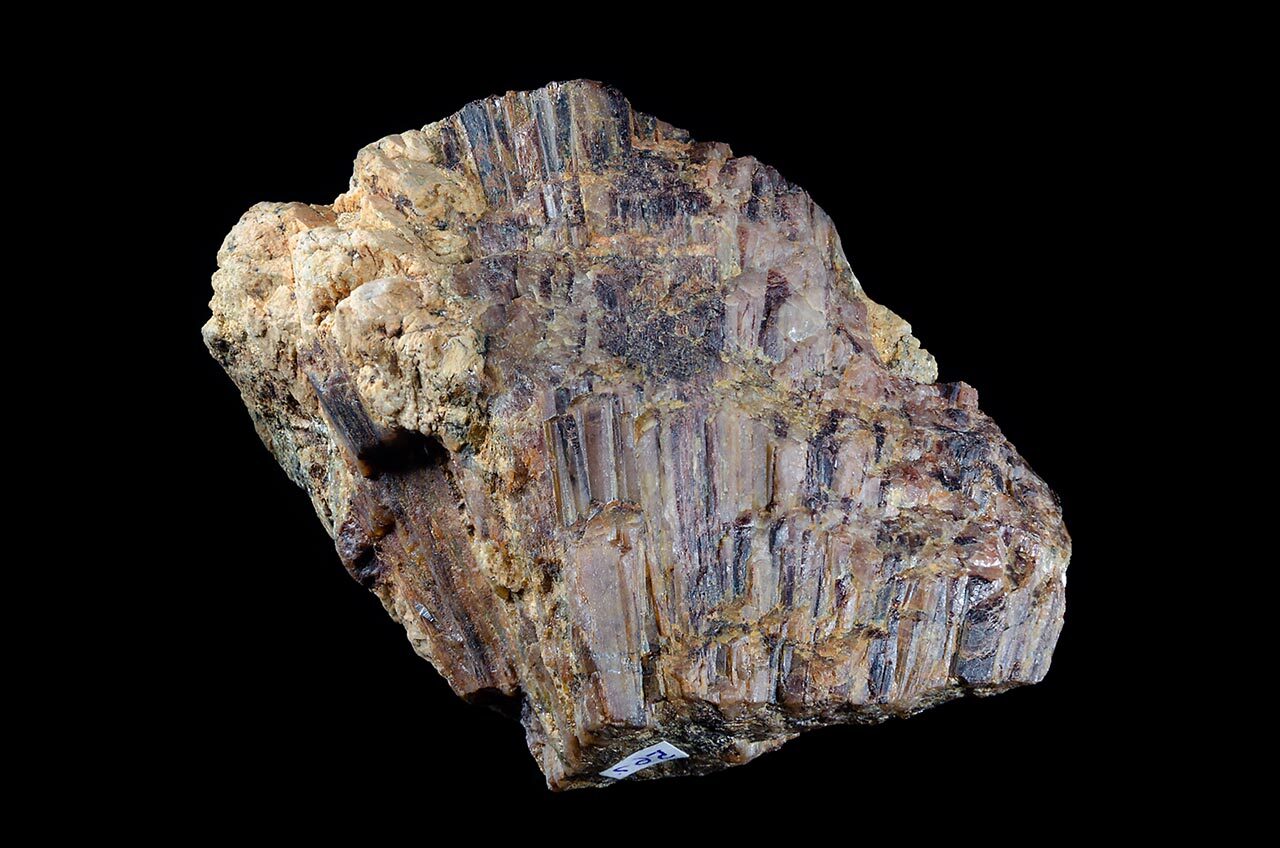
What makes andalusite so special? This unique mineral, named by Jean-Claude Delamétherie in 1798, is an aluminum silicate with the formula Al2SiO5. Known for its stunning color variations—ranging from pink and violet to green and yellow—andalusite crystallizes in the orthorhombic system. Its strong pleochroism, where colors shift based on the viewing angle, adds to its allure. Found in metamorphic rocks, andalusite forms under low pressure and varying temperatures. Its industrial uses include refractories and porcelain, while gem-quality specimens are prized for jewelry. South Africa, Brazil, and Sri Lanka are key sources. Let's dive into 45 intriguing facts about this remarkable mineral.
Key Takeaways:
- Andalusite, a unique mineral with colorful variations, is used in industrial applications due to its high melting point and resistance to heat. It is also prized as a gemstone in Brazil, Sri Lanka, and South Africa.
- Discovered in the 18th century, andalusite, along with its polymorphs kyanite and sillimanite, provides valuable insights into the geological history and pressure-temperature paths of the host rock. It is also a popular souvenir for pilgrims visiting Santiago de Compostela.
Discovery and Naming
Andalusite has a rich history that dates back to the 18th century. Its discovery and naming are fascinating aspects that set the stage for understanding this unique mineral.
- Andalusite was named by Jean-Claude Delamétherie in 1798.
- Delamétherie believed it came from the Andalusia region in Spain.
- The specimens he studied were actually from El Cardoso de la Sierra in Guadalajara, Spain.
Chemical and Physical Properties
Understanding the chemical and physical properties of andalusite helps us appreciate its unique characteristics and applications.
- The chemical formula for andalusite is Al2SiO5.
- Andalusite crystallizes in the orthorhombic crystal system.
- Its unit cell dimensions are a = 7.7980 Å, b = 7.9031 Å, and c = 5.5566 Å.
- Andalusite can exhibit a range of colors including pink, violet, yellow, green, white, and gray.
- It often forms as euhedral crystals or columnar aggregates.
- Twinning in andalusite is rare and occurs on the {101} plane.
- Andalusite has good cleavage on the {110} plane but poor cleavage on the {100} plane.
- The fracture of andalusite is uneven to subconchoidal.
- The Mohs hardness of andalusite ranges from 6.5 to 7.5.
- Andalusite has a vitreous luster.
- The streak of andalusite is white.
- Andalusite can be transparent to nearly opaque.
- The specific gravity of andalusite is approximately 3.17.
- Andalusite is double refractive and biaxial negative.
- The refractive indices for andalusite are nα = 1.629 – 1.640, nβ = 1.633 – 1.644, and nγ = 1.638 – 1.650.
- The birefringence of andalusite is δ = 0.009 – 0.010.
- The 2V angle for andalusite ranges from 71 to 86 degrees.
- Andalusite exhibits strong dispersion, with r < v.
- Andalusite does not fluoresce under ultraviolet light.
- Andalusite exhibits strong pleochroism, showing red, green, and yellow hues.
Varieties of Andalusite
Andalusite comes in several varieties, each with unique features and appearances.
- Chiastolite is known for its cruciform pattern formed by dark inclusions of carbon or clay.
- Viridine is a green variety resulting from manganese substitution for aluminum.
- Kanonaite is a greenish-black mineral with a similar composition to andalusite.
Gemstone Quality and Occurrence
Andalusite is not only a fascinating mineral but also a prized gemstone. Its occurrence in various parts of the world adds to its allure.
- Andalusite of gem quality occurs as greenish or reddish pebbles in Minas Gerais, Brazil, and in Sri Lanka.
- Andalusite is a common metamorphic mineral that forms under low pressure and low to high temperatures.
- The minerals kyanite and sillimanite are polymorphs of andalusite.
- Andalusite forms in metamorphic rocks, particularly in altered sediments.
- It is found in commercial quantities in the Inyo Mountains, Mono County, California, in Kazakhstan, and in South Africa.
Commercial and Industrial Uses
Andalusite's unique properties make it valuable in various industrial applications.
- Andalusite is used as a refractory in furnaces, kilns, and other industrial processes.
- South Africa possesses the largest portion of the world's known andalusite deposits.
- Andalusite is used in the production of refractories, porcelain, and other heat-resistant materials.
- Andalusite is used in the production of spark plugs due to its high melting point and resistance to heat.
Geological and Historical Significance
Andalusite holds significant geological and historical importance, making it a subject of interest for geologists and historians alike.
- Andalusite, along with its polymorphs kyanite and sillimanite, is a useful tool for identifying the pressure-temperature paths of the host rock.
- Chiastolite was taken to many European countries as a souvenir by pilgrims returning from Santiago de Compostela.
- Chiastolite forms in clay slates near a granite contact.
- Thermal expansion studies on andalusite have shown that it expands significantly with temperature.
- High-pressure studies on andalusite have revealed its compressibility and crystal structure under various pressure conditions.
- The equations of state for andalusite have been studied extensively.
Notable Occurrences
Andalusite is found in various parts of the world, each with its unique characteristics and significance.
- Andalusite is found in significant quantities in Minas Gerais, Brazil.
- Andalusite is also found in Sri Lanka, where it occurs as greenish or reddish pebbles.
- South Africa is the largest producer of andalusite, with significant deposits found in various parts of the country.
- The South African deposits are mined extensively for their industrial applications, including use in refractories and porcelain.
The Fascinating World of Andalusite
Andalusite is more than just a mineral. Its unique properties, like strong pleochroism and high melting point, make it valuable in both industrial and gemological fields. Found in places like Brazil, Sri Lanka, and South Africa, andalusite serves various purposes, from refractories to stunning gemstones. The mineral's different varieties, including chiastolite and viridine, add to its allure. Its role in geological studies helps scientists understand metamorphic processes. Historically, chiastolite was even used as a charm by pilgrims. Whether you're a geologist, gem enthusiast, or industrialist, andalusite offers something intriguing. Its ability to withstand extreme temperatures and its captivating appearance ensure it remains a mineral of significant interest. So next time you come across this remarkable mineral, you'll appreciate the rich history and diverse applications it brings to the table.
Frequently Asked Questions
Was this page helpful?
Our commitment to delivering trustworthy and engaging content is at the heart of what we do. Each fact on our site is contributed by real users like you, bringing a wealth of diverse insights and information. To ensure the highest standards of accuracy and reliability, our dedicated editors meticulously review each submission. This process guarantees that the facts we share are not only fascinating but also credible. Trust in our commitment to quality and authenticity as you explore and learn with us.


